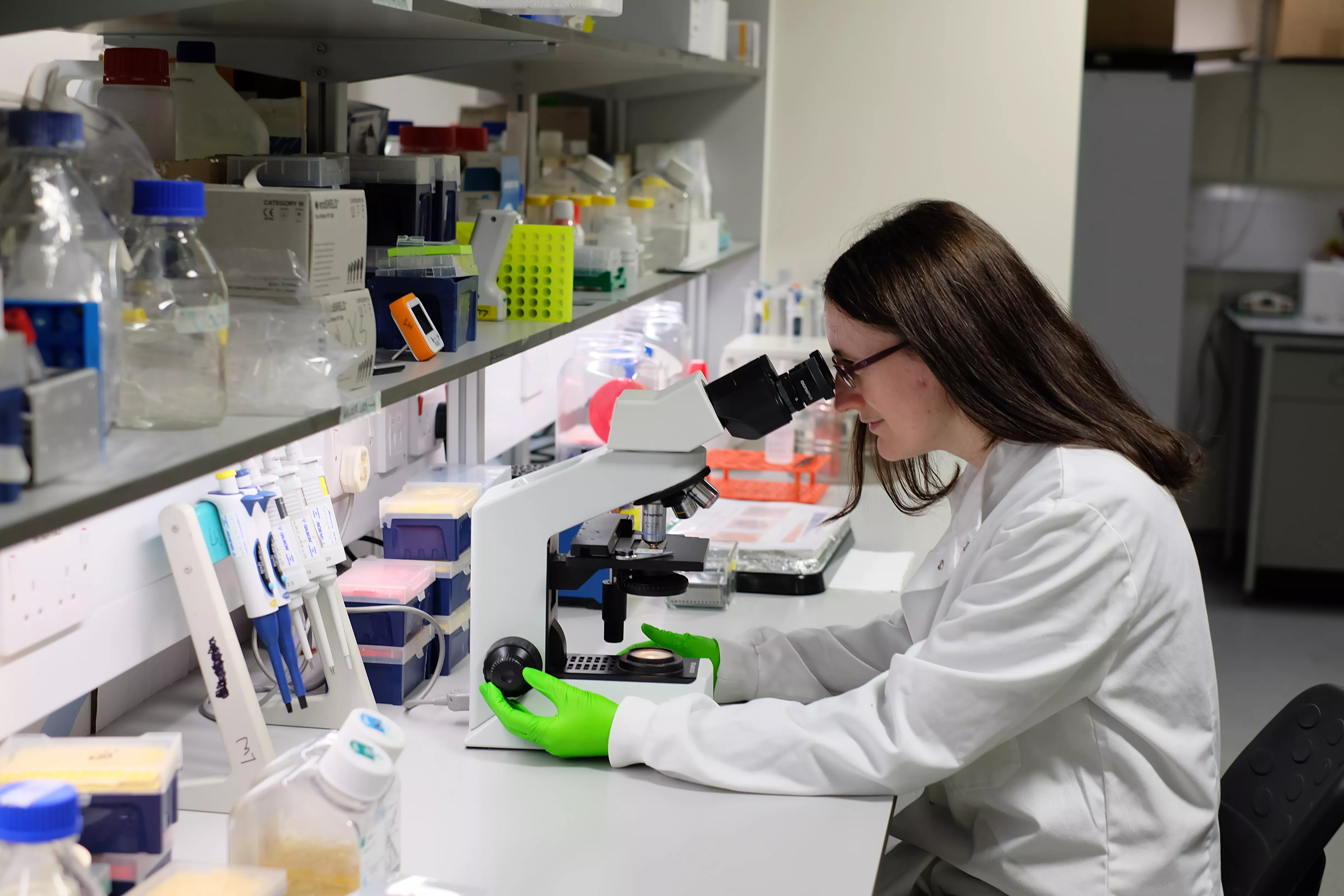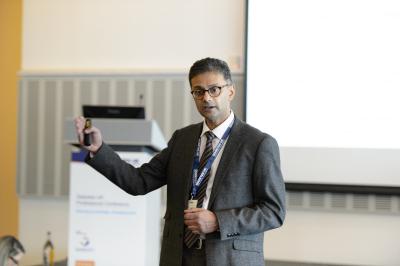
On day 2 of the Diabetes UK Professional Conference (DUKPC) we heard about
- exciting advances on the horizon for immunotherapy research for type 1 diabetes
- new ways of screening for type 1 diabetes
- new research in to the link between psychological and physical wellbeing following a diabetes diagnosis.
Are two immunotherapies better than one?
It’s been 100 years since insulin was first used to treat type 1 diabetes. A century later it remains the only treatment we have for the condition. At DUKPC, we heard from scientists who are working to change this and develop new treatments for type 1 diabetes.
One new treatment on the horizon is immunotherapy for type 1. In type 1, the immune system attacks and destroys insulin-making beta cells in the pancreas. Immunotherapies are designed to disrupt this attack to keep more beta cells alive for longer in people who’ve just been diagnosed. And they’re also being tested even earlier, with people who don’t have yet have type 1, but have a high risk of developing it in the future. The aim is to prevent or the delay the immune system’s attack.
Scientists have been testing different types of immunotherapies, which all target slightly different parts of the immune system, in clinical trials. One immunotherapy drug, called Abatacept, has been shown to help people recently diagnosed with type 1 produce around 60% more of their own insulin compared to people who weren’t treated with it.
Watch our video about how immunotherapy for type 1 diabetes works
Abatacept works to weaken ‘killer’ immune cells that destroy the beta cells. But scientists found that Abatacept also reduced the amount of important ‘friendly’ immune cells, called regulatory T cells (or Tregs). Tregs police the immune system and make sure it doesn’t attack healthy cells, so we need the right balance of them.
Striking the right balance
With our funding, Professor Lucy Walker at University College London is trying to stop this from happening. At DUKPC, she shared her team’s latest findings. They tested whether giving mice with type 1 diabetes Abatacept together with another type of immunotherapy (called IL-2) could make the two treatments even more effective.
They monitored levels of Tregs and insulin production in mice who received the drug to check if it helps to slow type 1 diabetes. They found that IL-2 helped to prevent the loss of Tregs in mice and made Abatacept work better.
Professor Walker’s Diabetes UK-funded project will next explore if there are any biological signals in the body that could help scientists predict who is likely to benefit most from the treatment.
This research will give us important evidence on how to make a promising immunotherapy treatment even more effective. We hope this could ignite new clinical trials in people with type 1 diabetes and help speed up progress towards getting the treatment approved for use.
Finding people at risk of type 1 diabetes
Scientists have been able to track what happens before and during the gradual destruction of insulin-making beta cells as people develop type 1 diabetes. This led to the discovery that at the very earliest stages of type 1 diabetes – years or even decades before a diagnosis – the immune system starts to make proteins called islet autoantibodies.
Autoantibodies are a sign that the immune attack is getting ready to attack. It is now possible to test for autoantibodies using a simple blood test. It predicts whether someone will develop type 1 diabetes in the future. If you test positive for two or more different autoantibodies, you have about an 85% chance of developing type 1 diabetes in the next 15 years.
At the moment in the UK, you can get tested for type 1 diabetes autoantibodies only as part of a research trial if you are a close relative of someone with type 1 diabetes. But 90% of people who develop type 1 have no family history of the condition.

Today at DUKPC, Dr Parth Narendran explained that to spot those at risk of type 1, we need to go further and think about screening the general population. Some countries, like Germany and Australia, already have large screening programmes to detect type 1 diabetes risk in children. Autoantibodies normally appear during childhood, even for those who won’t develop type 1 diabetes until they’re adults. That’s why researchers think it's most useful to screen children.
The earlier we screen, the more time to intervene
Dr Narendran discussed the potential benefits for children who are picked up through screening as being at high risk of developing type 1 diabetes in the future:
- Finding out early gives us the chance to follow children up closely and start insulin treatment sooner, before they get unwell with potentially life-threatening diabetic ketoacidosis (DKA). At the moment, a quarter of children are in DKA when they’re diagnosed. Screening programmes could make rates of DKA at diagnosis around five times lower.
- There’s evidence that starting to take insulin earlier can give any remaining beta cells a helping hand and allow them to survive for longer. This means people can continue to produce small amounts of their own insulin. This has been shown to make blood sugar levels much easier to manage and reduce the risk of diabetes complications in the future.
- It can give a ‘soft landing’ diagnosis and time to prepare for life with type 1 diabetes. Children and their families can receive diabetes education and learn all about injecting insulin and carb counting so they are prepared for managing type 1 well as soon as they receive a diagnosis.
- Identifying who is at risk before they develop type 1 gives us a window of opportunity to use immunotherapy and disrupt the attack before it progresses too far. Children who have tested positive for autoantibodies can be invited to take part in research studies testing these treatments. Without screening it would be impossible to run these studies.
However, there could be downsides to screening too. Some people say it can be distressing finding out they or their child are at risk. And there are still lots of questions too, like what’s the best age to start screening? What’s the best way to do it? Would it be cost-effective for the NHS? And what’s the best way to care for children who are identified as high risk?
Dr Narendran argued the time is right to start making plans for general population screening and finding answers. An immunotherapy, called teplizumab, has been shown to delay type 1 diabetes by an average of three years in a clinical trial involving people who were at high risk.
Following these landmark results, teplizumab has been submitted to regulatory bodies in the UK and the USA. They’re reviewing the evidence and we’re expecting them to make a decision on approving teplizumab for use outside of clinical trials in the coming months. If this happens, it’s vital we have a way of finding those who are at risk of type 1 so we know who could benefit from this groundbreaking treatment.
It’s certainly an exciting time. We could be fast approaching a shift in type 1 diabetes, where screening will allow us start care and treatment before people have developed the condition.
Psychology and blood sugar levels
Being diagnosed with diabetes can be a huge shock and have a big emotional impact. Everyone is different and how people cope with a diagnosis will vary. It’s perfectly normal to feel angry, shocked, low and overwhelmed in the weeks and months following your diabetes diagnosis.
Our researcher Dr Angus Jones and a team at the University of Exeter wanted to better understand how psychological resilience at diagnosis might be linked to blood sugar control. Psychological resilience refers to our ability to cope with difficulties and to adapt to stressful life events.
Adjusting to diabetes
They studied psychological resilience in 1,266 adults who had just been diagnosed with type 1 or type 2 diabetes. Participants filled in a questionnaire shortly after their diagnosis that measured their resilience. It asked about factors like how focused they stay under pressure and how they adapt to change. The researchers looked for any links between resilience and HbA1c levels over the following two years.
In people with type 2 diabetes, they didn’t find any relationship between the two. But in people with type 1 diabetes, results showed that higher resilience shortly after diagnosis was linked with a lower HbA1c two years later.
Dr Jones explained, “This research shows that a very short questionnaire close to diabetes diagnosis identifies people more likely to have high blood sugar in the future. This can help us identify those who might benefit most from additional support when they are first diagnosed, to help them adjust to the challenges of managing type 1 diabetes, and prevent complications of diabetes in the future.”
These findings highlight how psychological and physical wellbeing after a diagnosis can be intertwined. Getting the right emotional, as well as medical, support at diagnosis is critical, but too often can be overlooked. Next, we need further research to establish the types of psychological interventions could help people to manage and live well with their condition.
